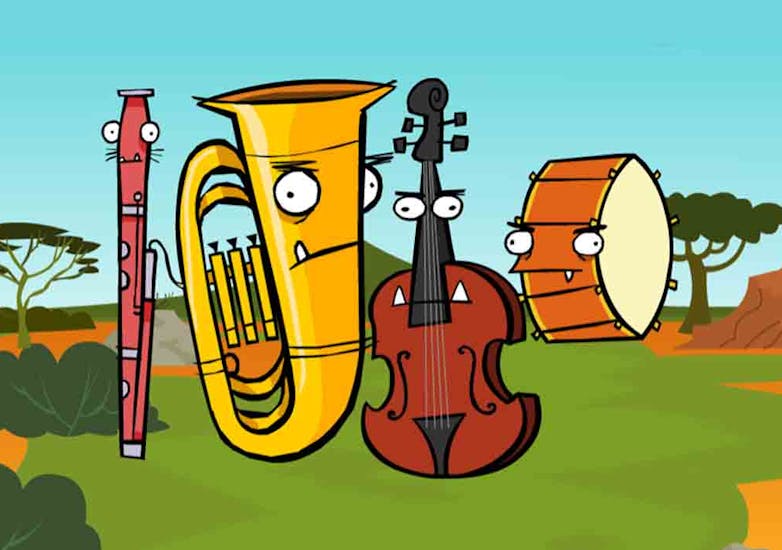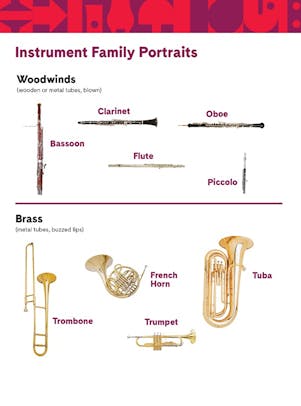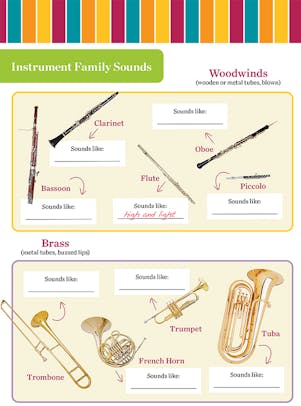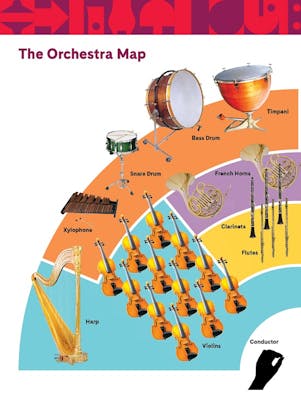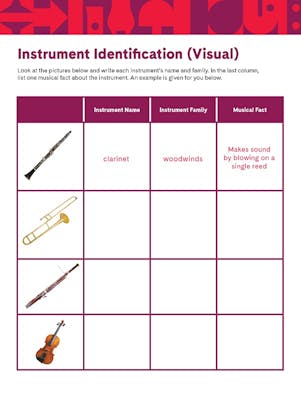Link Up
Instrument Families
Instrument Families
Aim: What is an orchestra?
Summary: Students become familiar with the instruments and families of the orchestra.
Standards: National 6, 7, 8; NYC 1, 2, 3, 4, 5
Vocabulary: instrument, orchestra
Related Pages:
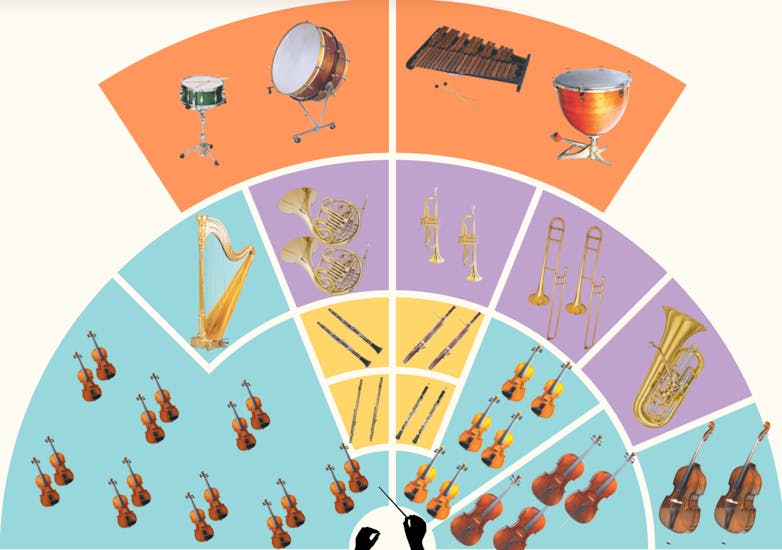
Instrument Families Exploration
- Watch the video Families of the Orchestra below.
- Which instruments did you recognize?
- Did you see or hear any unfamiliar instruments?
- What are some other instruments that you are familiar with?
- At the Link Up concert, you will see and hear many types of musical instruments. Each instrument has unique characteristics, such as the different ways they produce a sound, the materials used to create them, and their overall appearance. These characteristics ultimately divide instruments into four families: woodwinds, brass, percussion, and strings.
- Play the four instrument family tracks below while students refer to Instrument Family Portraits (PDF). You can also use the Instrument Family Sounds (PDF) activity, which allows students to take notes as they listen.
- Pause after each instrument and ask the following questions:
- What do you notice about this instrument?
- What is unique about the way this instrument sounds?
- Below are some characteristics to keep in mind as you go through this activity with your students:
- Appearance (colors, shapes, sizes)
- Materials used (wooden tubes, metal tubes, reeds, double reeds, wooden bodies, strings)
- Mechanisms and structures (slides, valves, bells, f-holes, finger holes, mouthpieces, bridges, bows, keys, pads, separable sections, mutes)
- How sound is produced (breath, buzzing lips, fingers, bows, striking, shaking, scraping)
- Show students how the families are grouped together on the stage by reviewing The Orchestra Map (PDF).
Identifying Instruments and Families
Complete the following activities to assess your students’ knowledge of the instruments and their families. For additional instrument identification assessments, refer to the Music Skills Assessment (PDF).
Part 1 (Visual)
- Complete the activity Instrument Identification (Visual) (PDF).
- We are going to identify instruments of the orchestra. Fill in the boxes next to each image.
- Also, write in one musical fact about each instrument. Notice that the first example is completed for you.
- Have students form pairs and check one another’s work.
Part 2 (Audio)
- Play the eight instrument identification tracks below.
- Complete the activity Instrument Identification (Audio) (PDF).
- Compare and discuss answers.
- Play tracks again as needed.
- Discuss the role of the conductor in an orchestra.
- Why does an orchestra need a conductor?
- How does a conductor communicate with the orchestra during a performance without talking?
- Conductors direct the orchestra using arm movements called “beat patterns” that indicate the meter and tempo of a piece of music. Demonstrate the 4/4 beat pattern pictured below.
- When a piece has a 4/4 time signature, the conductor uses this pattern with his or her right hand (down, left, right, up).
- Use your pointer finger as your conductor’s baton and practice your 4/4 beat pattern.
- Next, have the students in the class establish a slow, steady beat by patting their knees and counting “1, 2, 3, 4.”
- While half of the class maintains the steady beat, invite the remaining students to practice the 4/4 beat pattern in time.
- Have individual students lead the class as the conductor while the students count, being careful to follow the conductor’s tempo, dynamics, and expression.
- What other types of musical ideas might a conductor want to share with the orchestra besides the tempo and meter?
- As you practice your Link Up repertoire throughout the year, invite individual students to be the guest conductor and lead the class, making their own musical choices.
The Conductor
For all of the instruments of the orchestra to play together, they need someone to lead them. It is the job of the conductor to keep a steady beat for the musicians to follow, indicate dynamics and changes in tempo, and interpret a musical composition expressively. Conductors are highly trained musicians, many of whom have played one or more instruments for many years. Who will the conductor be at your Link Up concert?

My Own Orchestra
- With the Instrument Family Portraits (PDF), study the instruments in their appropriate family boxes while listening to the four instrument family tracks below.
- Symphony orchestras are designed to play many kinds of music from various times and places. Orchestras from different cities all over the world include more or less the same instruments, sitting in more or less the same places.
- What if you designed your own orchestra to play a single special kind of music?
- Model and complete the activity My Own Orchestra (PDF).
- Share your work with Carnegie Hall by emailing linkup@carnegiehall.org.
